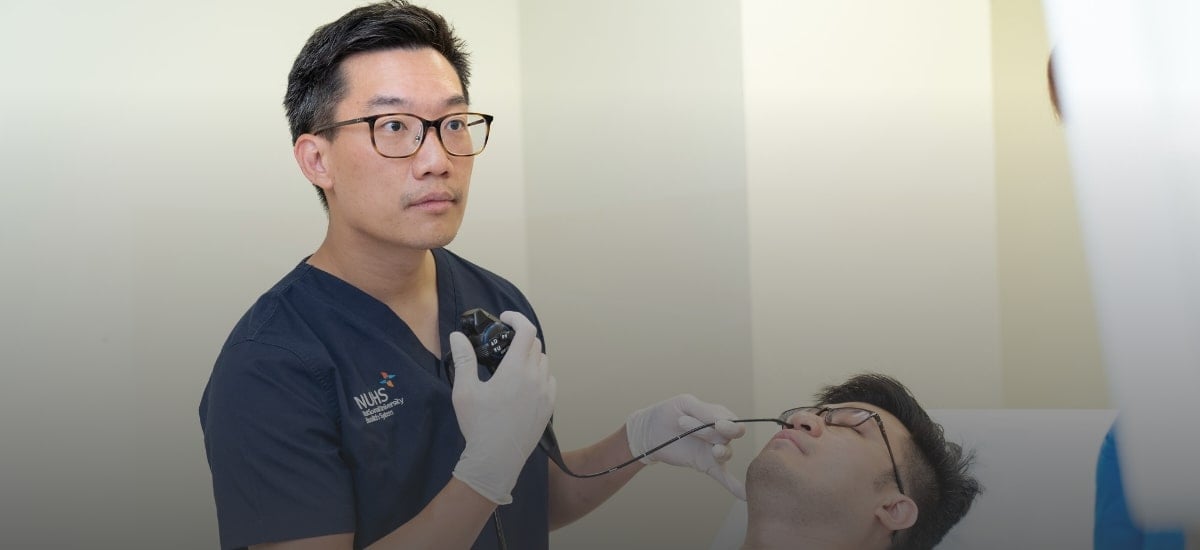Published on 7 October 2024
Radiofrequency ablation is a non-surgical treatment that offers a minimally invasive solution for thyroid nodule management.
Did you know that most thyroid nodules are harmless?
Despite the common fear that any strange lump is cancerous, most thyroid nodules are benign and do not require surgery.
However, they are still worth monitoring, as nodules that grow unexpectedly large can cause other health issues. In such cases, treating the nodule may be the best course of action.
While surgery was once the standard solution, there is now a minimally invasive alternative available — thanks to a new technology called radiofrequency ablation (RFA).
RFA is a non-surgical treatment that utilises radiofrequency current to heat up and remove benign thyroid nodules. This procedure involves the insertion of a small probe – approximately the size of an injection needle – into the thyroid nodule under ultrasound guidance. The probe emits radiofrequency waves that heat up the nodule, effectively destroying the targeted cells and alleviating any symptoms the patient may have.
The entire procedure typically lasts between 30 to 45 minutes, depending on the size of the nodule.
One patient who underwent the RFA procedure is 55-year-old Mdm Lee Swee Lian.
When Mdm Lee first discovered that her right thyroid nodule was swollen during a health screening just over eight years ago, she was referred to a hospital for a biopsy, which found it to be benign. She was told that the only option to reduce the swollen nodule was to treat it entirely through an open surgery. Alternatively, she could choose to leave it alone, since it posed no harm to her.
She decided to leave it alone.
However, the swollen nodule grew over time, and it became so visible that her family and friends became concerned. Upon the recommendation of a friend, she visited the National University Hospital (NUH) and consulted with Dr Charmaine Tan, Consultant at the Department of Otolaryngology – Head & Neck Surgery.
After assessing her condition, Dr Tan recommended that Mdm Lee consider RFA to reduce the size of the thyroid nodule.
On 18 April 2023, Mdm Lee underwent the procedure, which was performed by Dr Donovan Eu, Department of Otolaryngology - Head & Neck Surgery at NUH.
Mdm Lee was discharged on the same day as the procedure. Her recovery was also swift — the bruising around her wound subsided within days, and she was able to resume her daily routine soon after.
Follow-up appointments in the following months showed that her thyroid nodule had reduced further in size and was no longer visible.
How RFA benefits patients
Mdm Lee’s case highlights the many advantages of RFA over traditional open surgery.
Firstly, patients undergoing RFA experience minimal downtime and shorter recovery periods, with most able to return to work and resume normal activities within a day of the procedure.
Additionally, RFA carries a lower risk of complications, with less than one per cent risk of heat transmission to surrounding areas, thermal injury to nearby blood vessels, and skin burns.
Moreover, the risks of bleeding, infection, and scarring are significantly lower compared to traditional open surgery.
The success rate for RFA is also encouraging. In a systematic review involving 1,737 patients treated for a total of 1,943 thyroid nodules, an impressive 85 per cent achieved a reduction of at least 50 per cent in the size of their nodules.
Most patients experienced a volumetric reduction ranging from 67 to 93.6 per cent, with long-term efficacy demonstrated over a minimum follow-up period of 18 months.
“RFA is usually recommended for patients with benign thyroid nodules. Prior to undergoing RFA, patients are urged to undergo two biopsies to confirm the benign nature of the nodule. Patients with predominantly solid nodules who are symptomatic would benefit most from RFA,” said Dr Eu.
Dr Eu explained that patients often have concerns about the potential recurrence of the thyroid nodule, the risks associated with the procedure, and the recovery process afterwards.
“Patients can discuss their options and share their concerns with their doctor before deciding on RFA,” added Dr Eu.
As a safe, effective and minimally-invasive procedure for reducing benign thyroid nodules, RFA can benefit many. Its high success rates, minimal downtime, and reduced risk of complications compared to traditional surgery make it a great alternative procedure for eligible patients.
In consultation with Dr Donovan Eu, Consultant, Department of Otolaryngology - Head & Neck Surgery, NUH; Dr Charmaine Tan, Consultant, Department of Otolaryngology - Head & Neck Surgery, NUH and Consultant, Department of Otolaryngology - Head & Neck Surgery, NUH.

